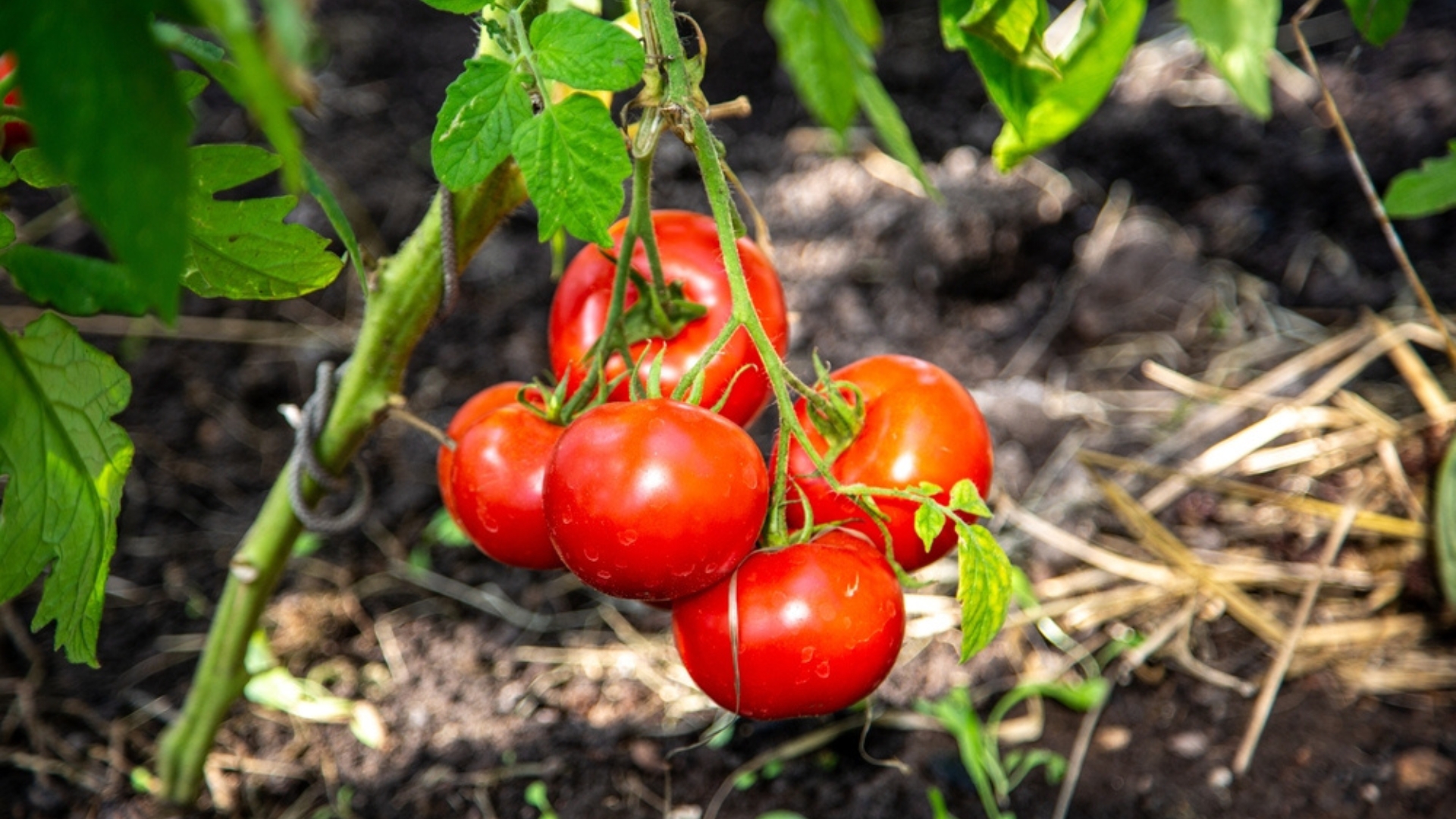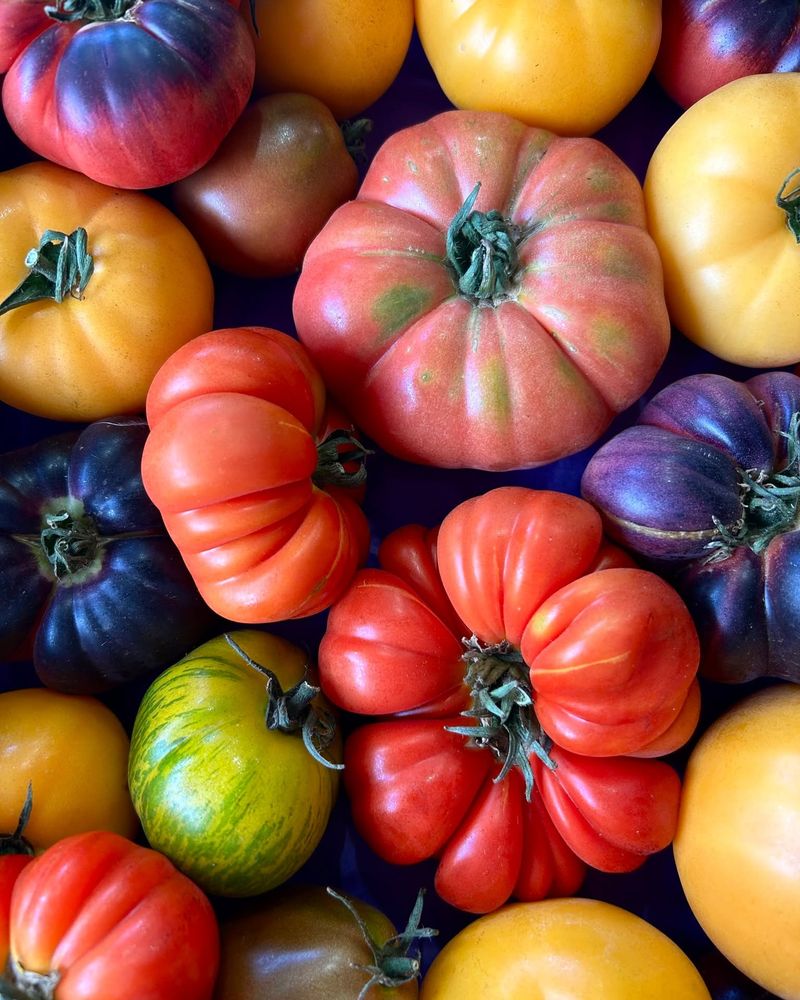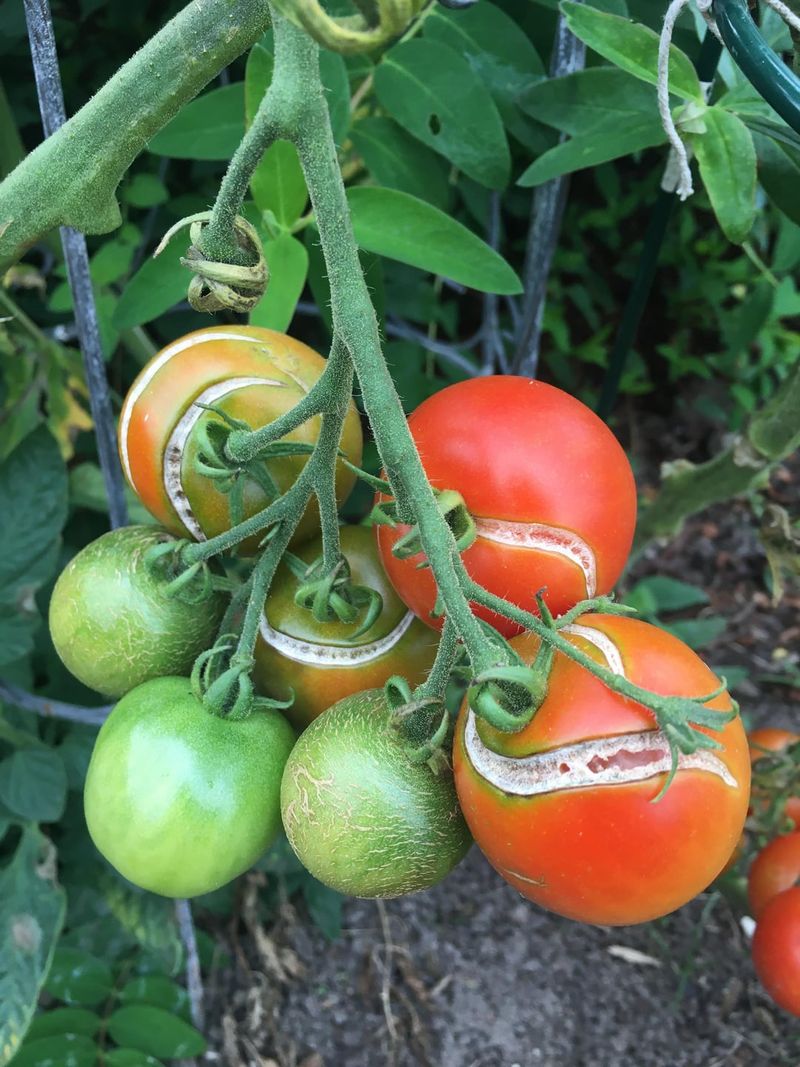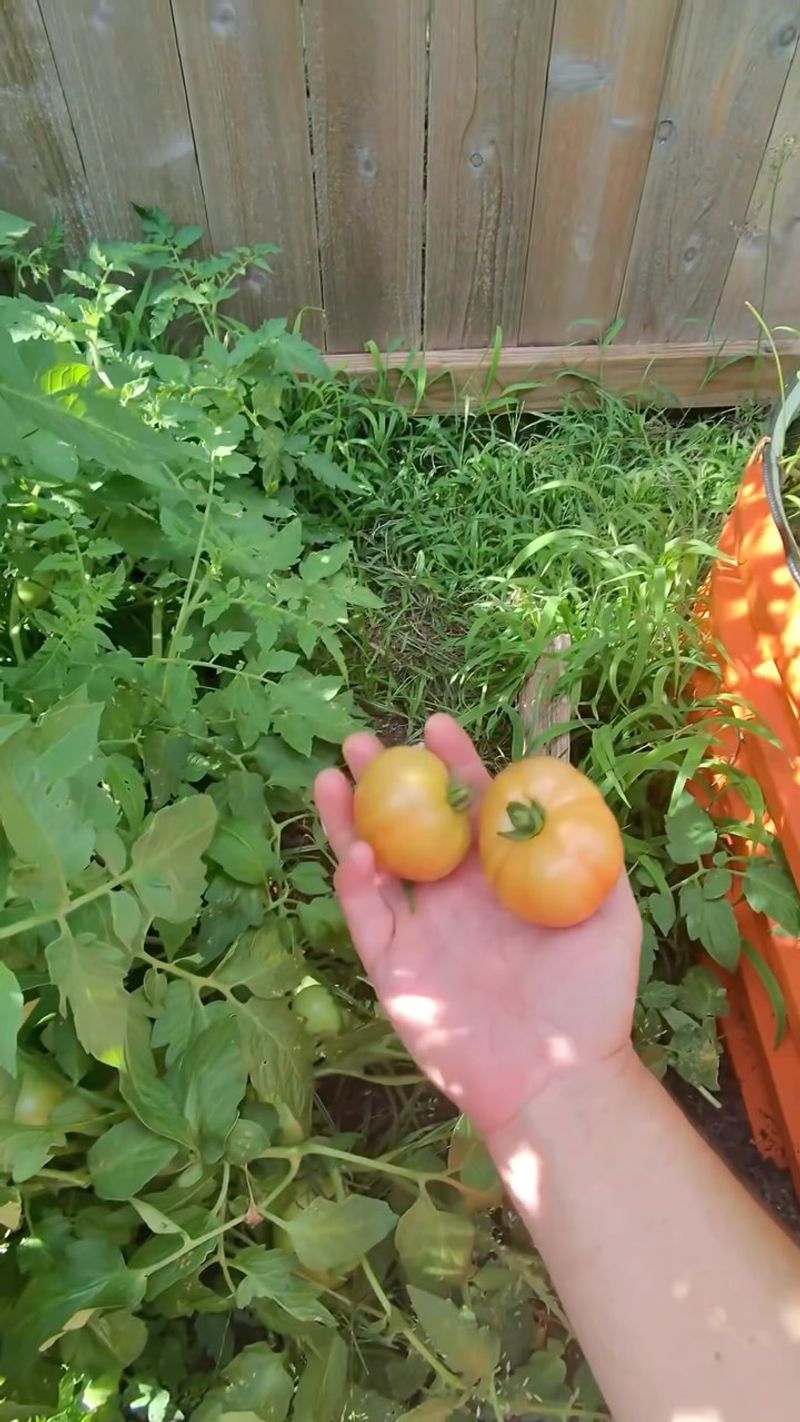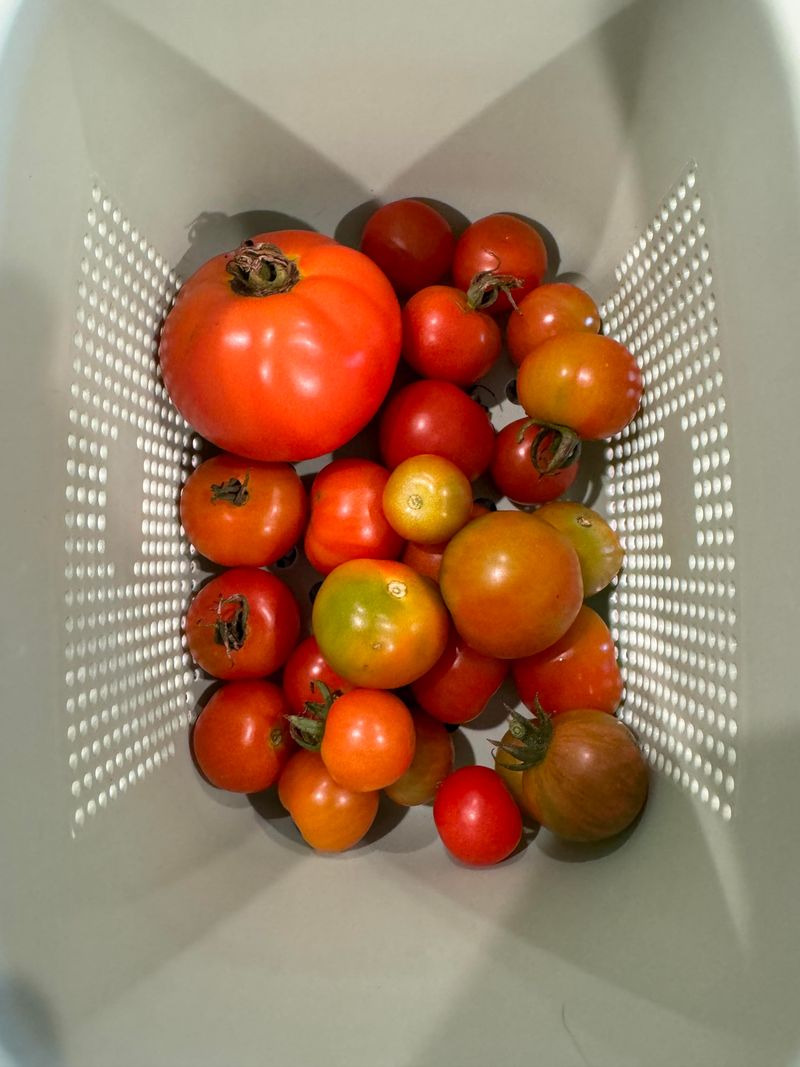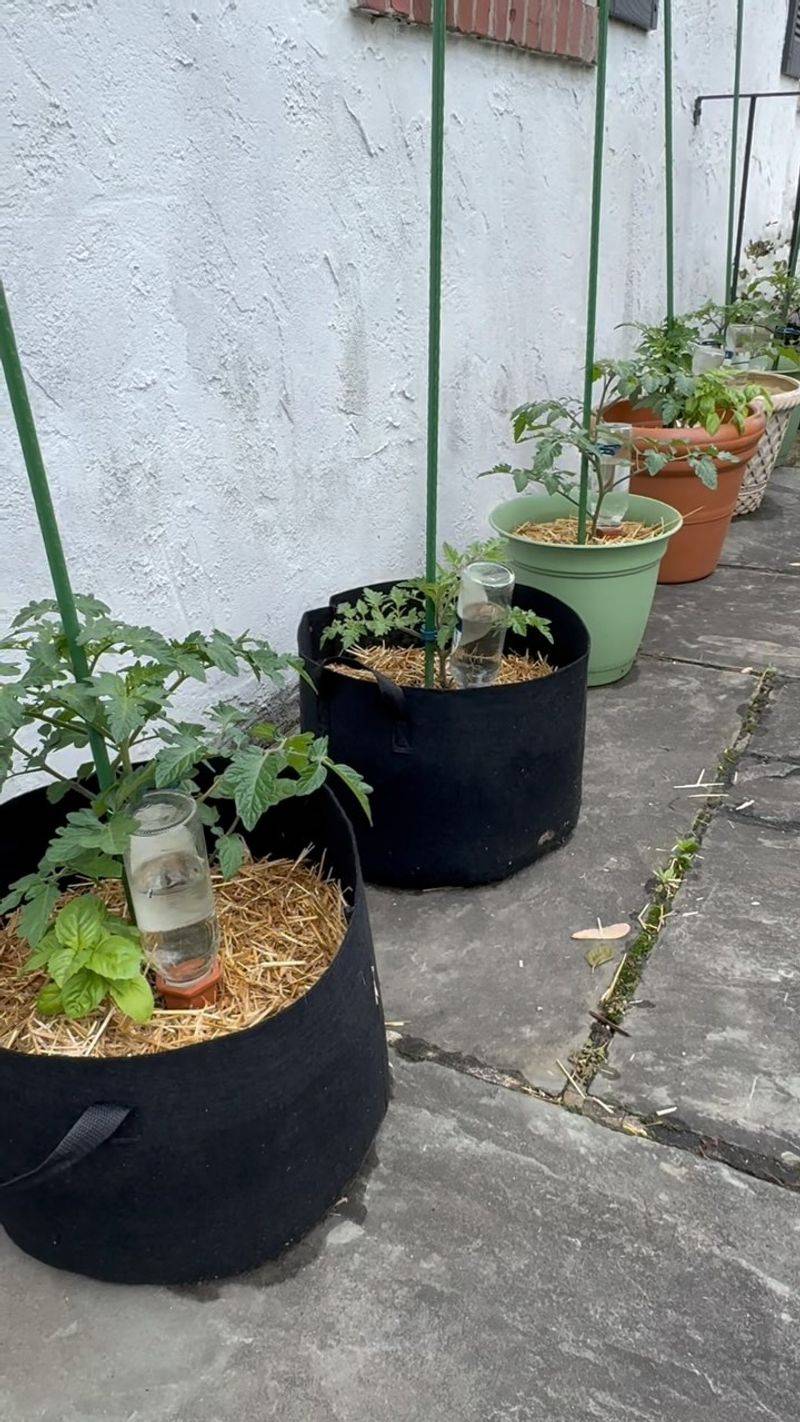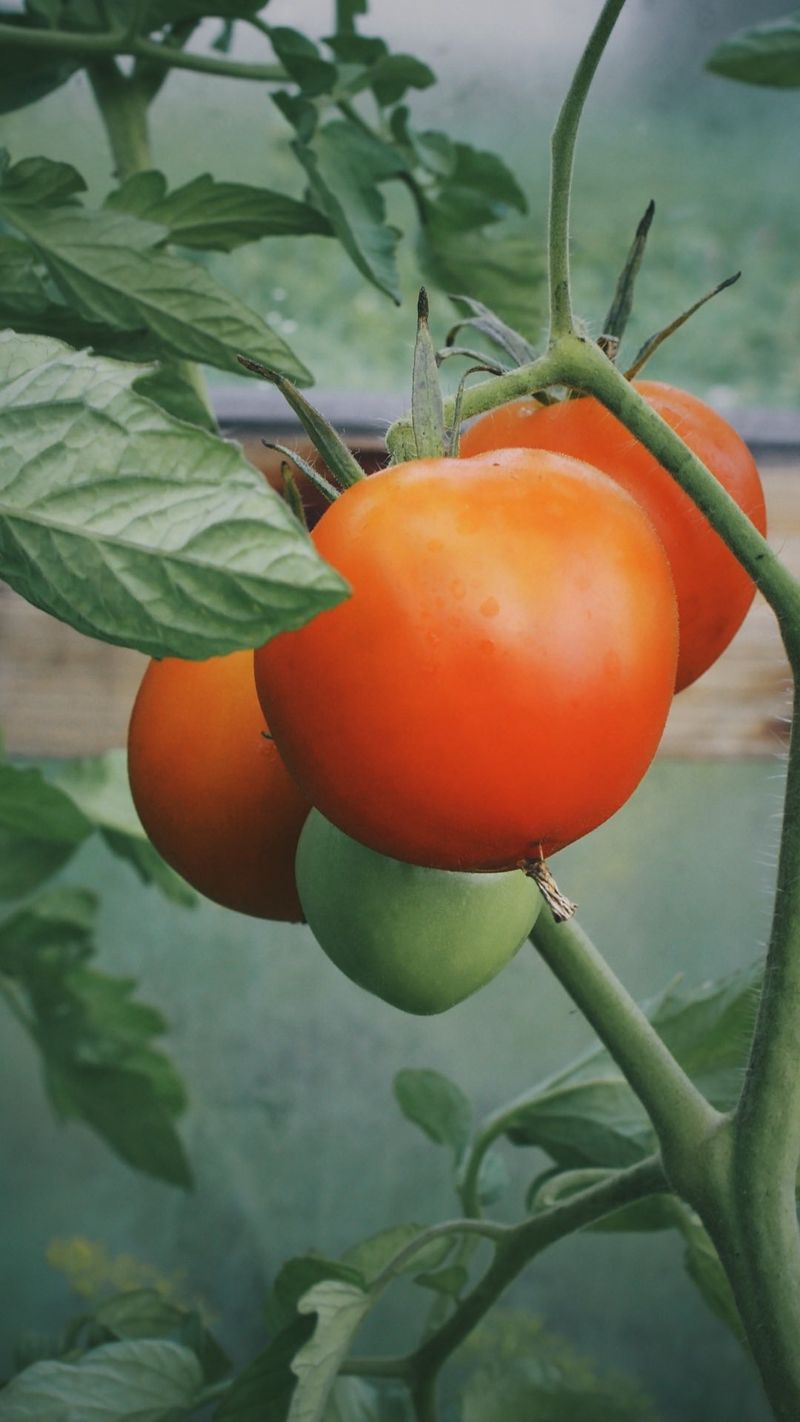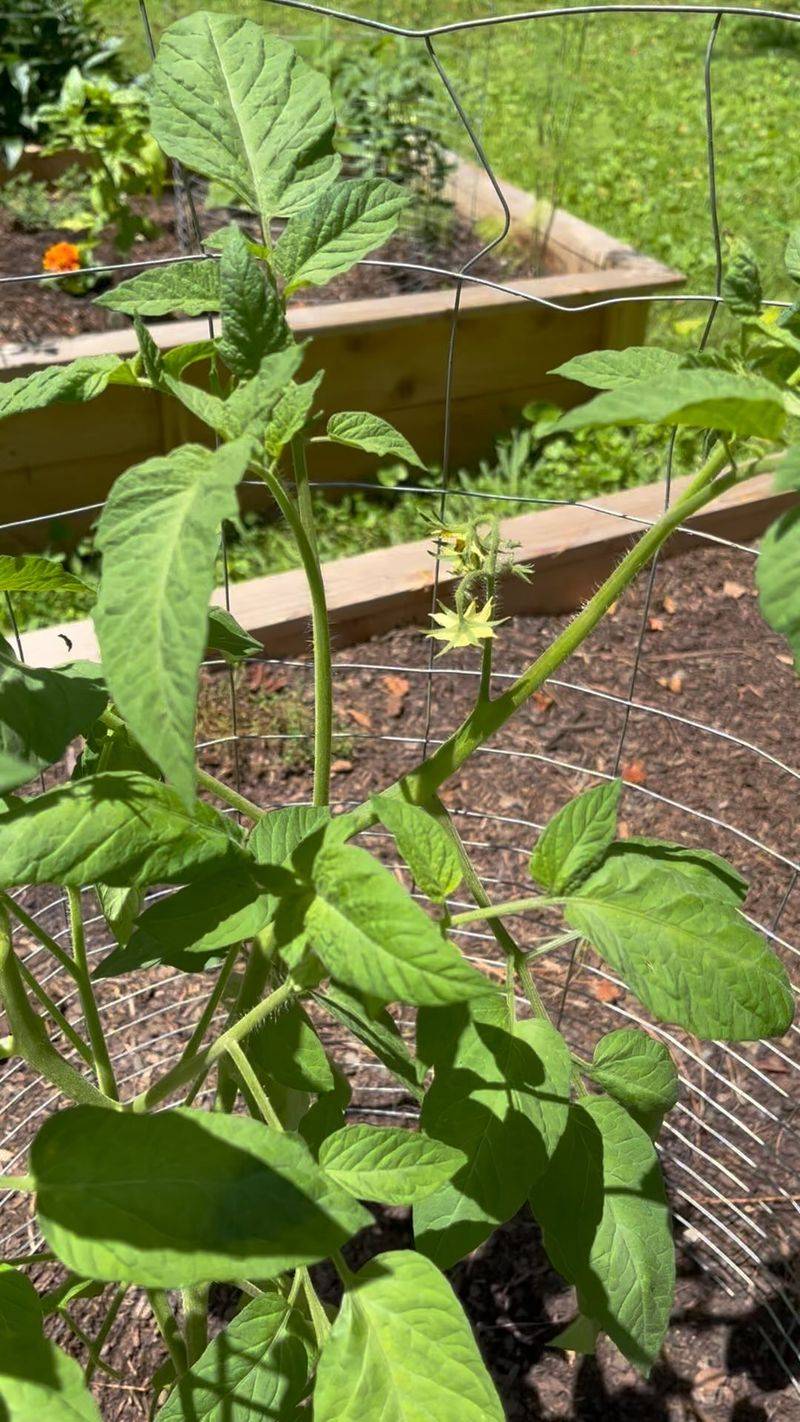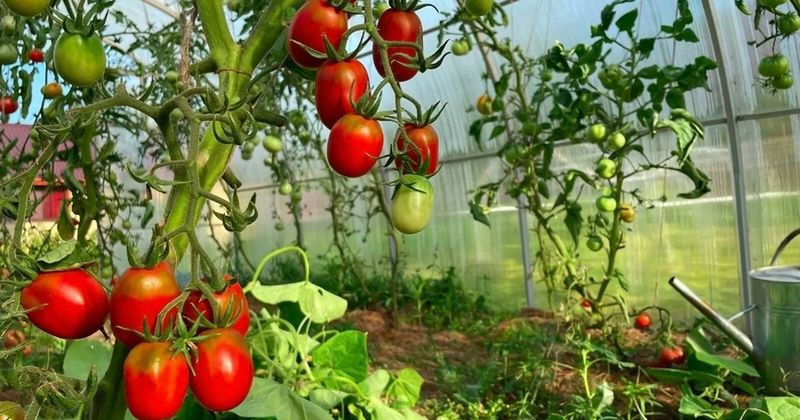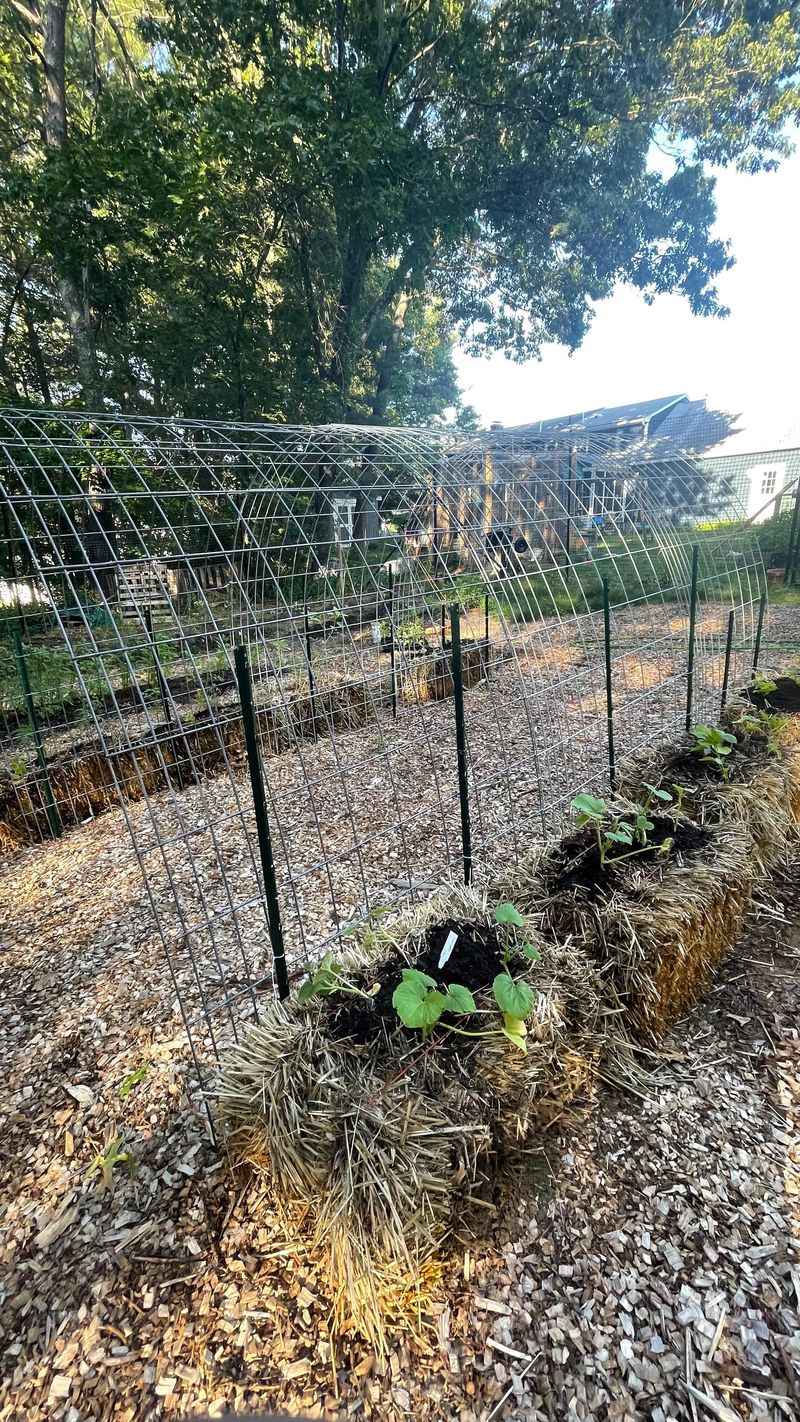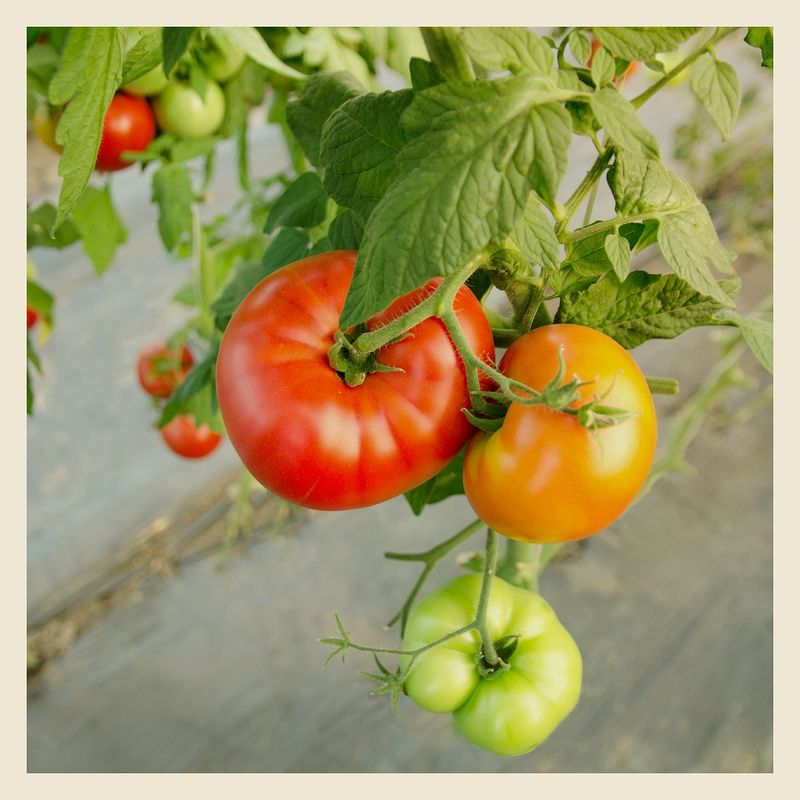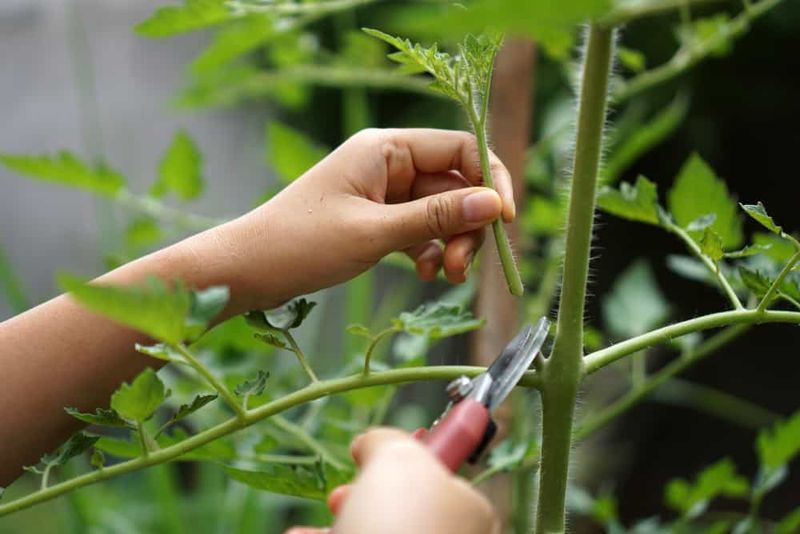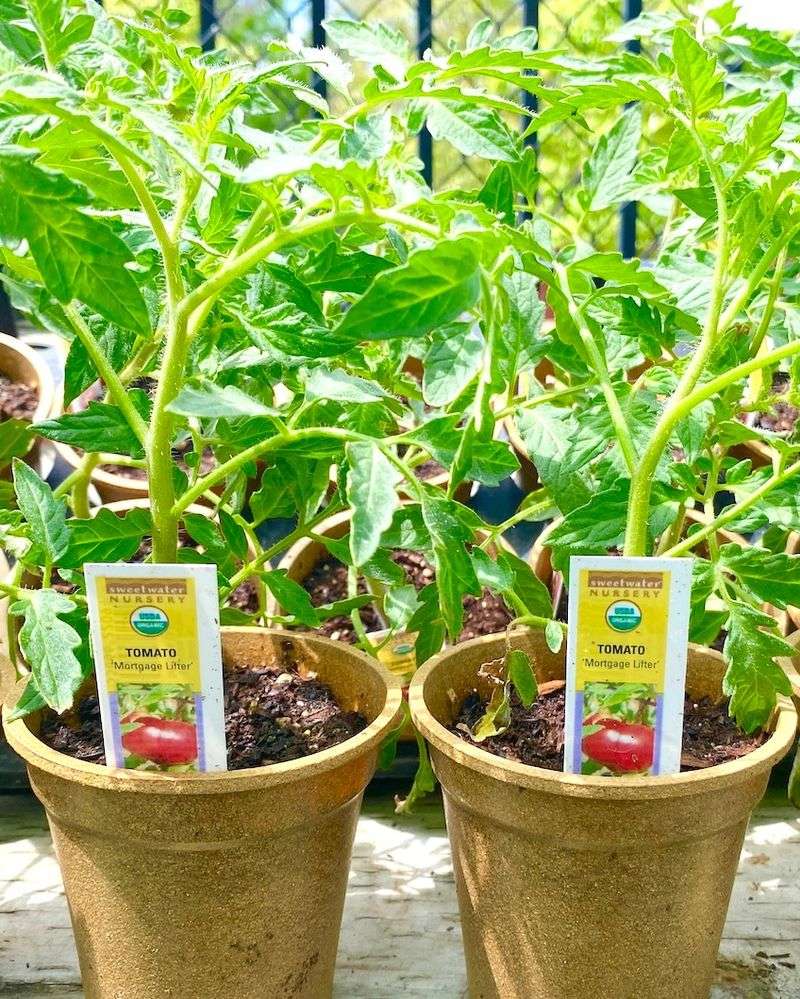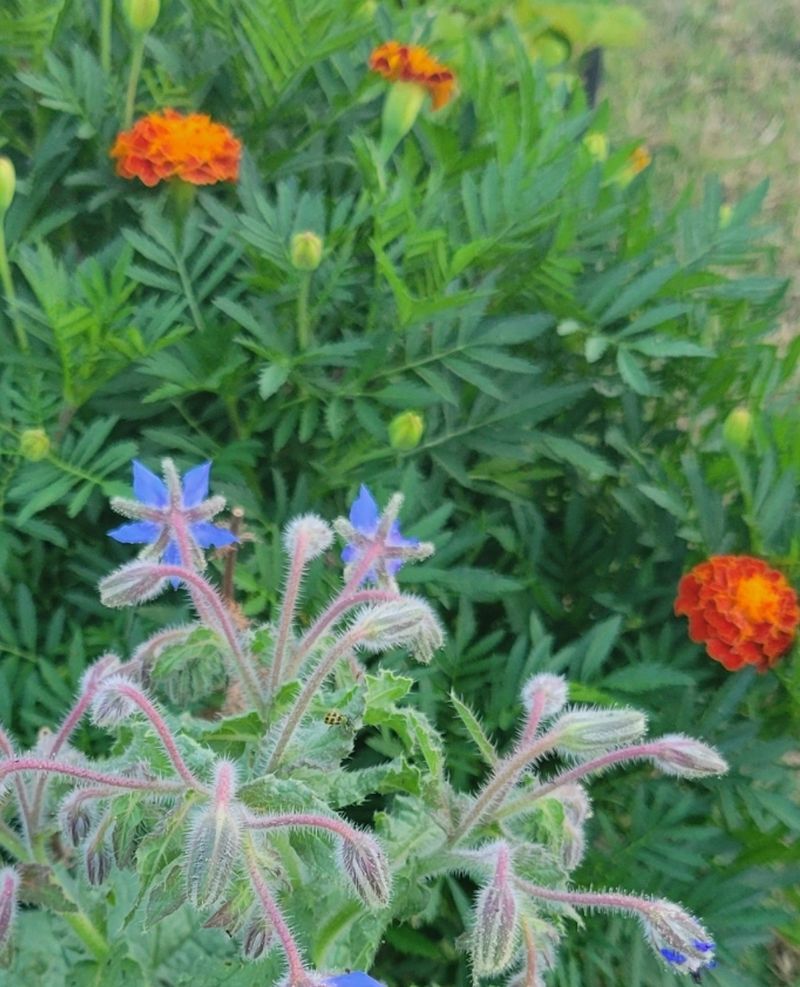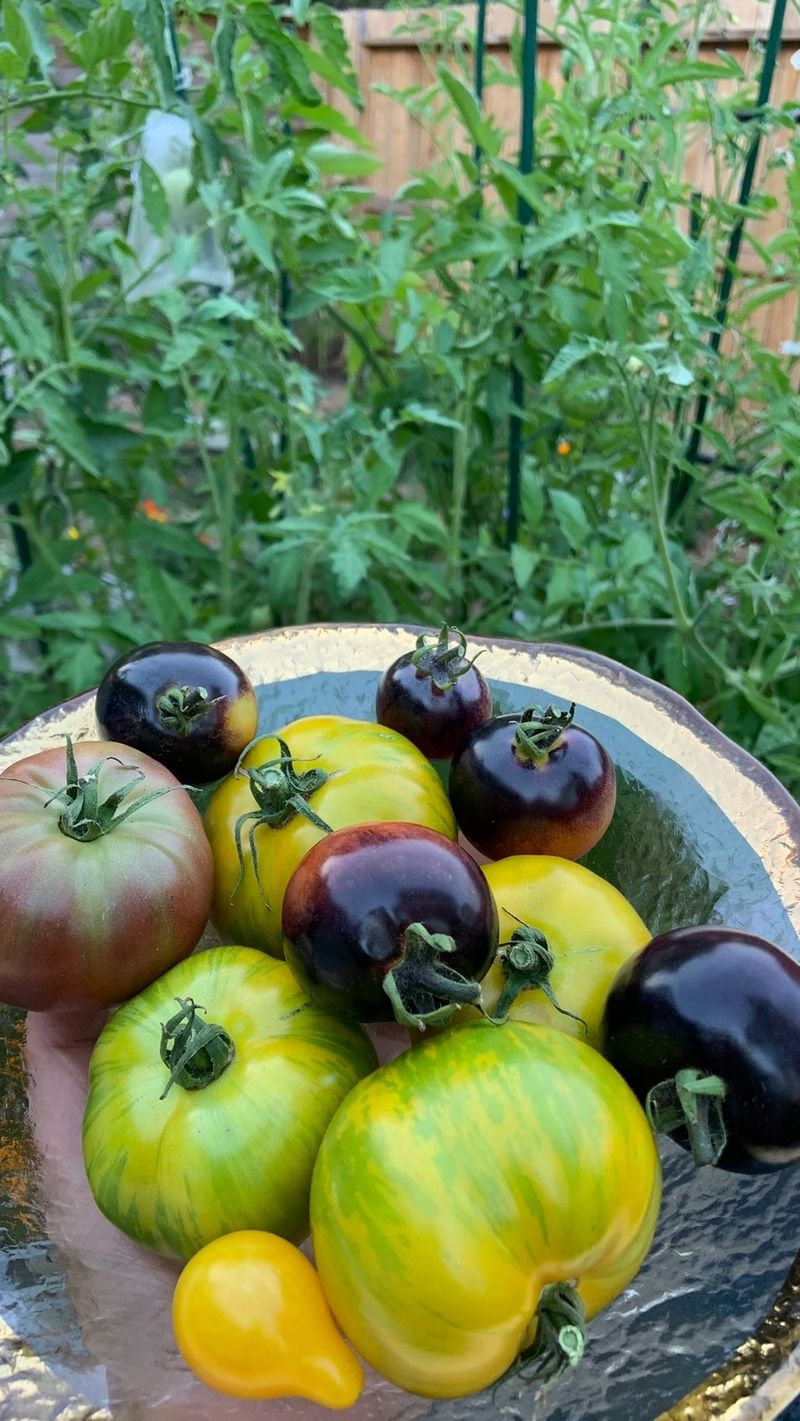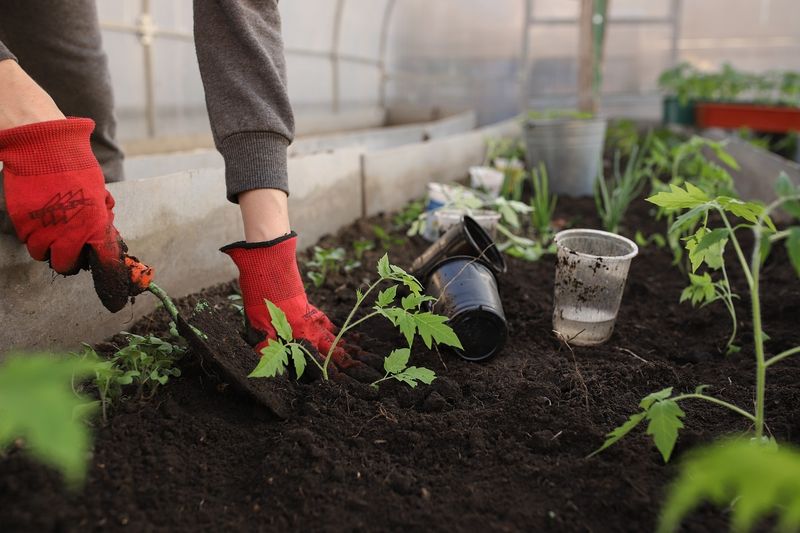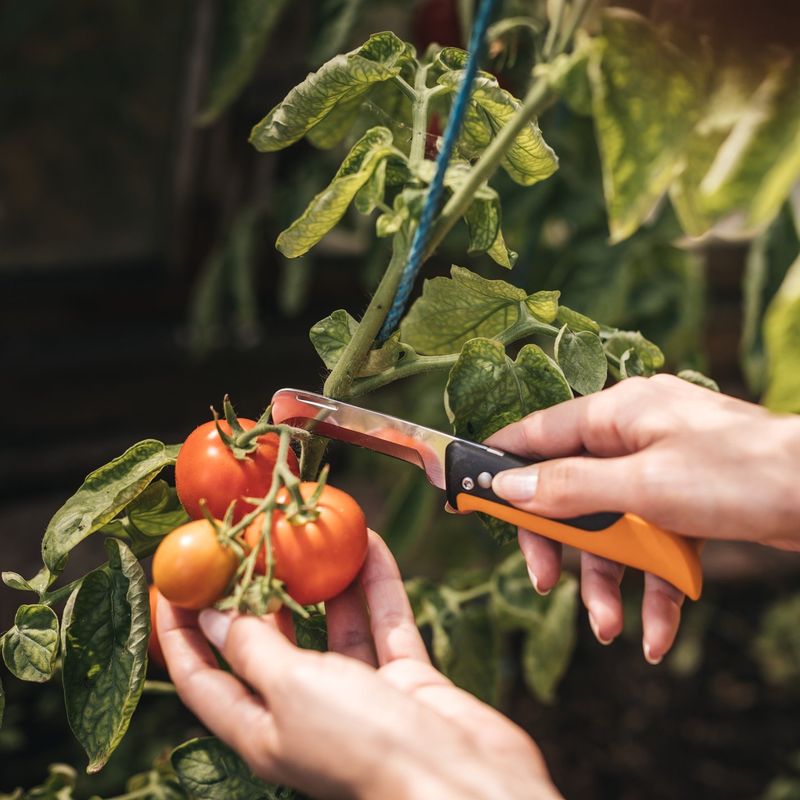Growing your own tomatoes can be incredibly rewarding, but it’s surprisingly easy to make mistakes that affect their flavor. Nothing beats the taste of a perfectly grown backyard tomato, bursting with sun-ripened sweetness. Knowing what errors to avoid can mean the difference between bland, disappointing fruits and the mouthwatering tomatoes of your dreams.
1. Picking Varieties Based on Looks Alone
Many gardeners choose tomato varieties simply because they look pretty in catalogs or at nurseries. The reality is that some of the most beautiful tomatoes have been bred for appearance and shipping durability rather than flavor.
Heirloom varieties often look less perfect but deliver incredible taste experiences. Research varieties known for exceptional flavor like Brandywine, Cherokee Purple, or Sun Gold cherry tomatoes before planting. Your taste buds will thank you!
2. Watering Inconsistently
Tomato plants develop stress when they experience extreme fluctuations between dry and soaked conditions. This stress directly impacts flavor development and can cause problems like blossom end rot or fruit splitting.
Aim for consistent soil moisture using mulch to regulate water retention. Deep watering a few times weekly is better than daily sprinkles. Your tomatoes need about 1-2 inches of water weekly, adjusted for rainfall and temperature.
3. Harvesting Too Early
Impatience leads countless gardeners to pick tomatoes before they’ve developed their full flavor potential. Vine-ripened tomatoes contain significantly more sugars and complex flavor compounds than those harvested while still pale or partially green.
Wait until fruits are fully colored and slightly soft when gently squeezed. The tomato should easily detach from the stem with minimal resistance. For the absolute best flavor, harvest in the morning when temperatures are moderate.
4. Refrigerating Fresh Tomatoes
Placing freshly harvested tomatoes in the refrigerator is a flavor disaster! Cold temperatures below 55°F halt the ripening process and damage the flavor-producing enzymes in the fruit.
Store tomatoes at room temperature, stem-side down on a countertop away from direct sunlight. They’ll continue developing flavor until consumed. Only refrigerate fully ripe tomatoes if you absolutely must keep them from spoiling for a few extra days.
5. Planting in Poor Soil
Tomatoes grown in nutritionally deficient soil simply cannot develop their signature complex flavors. The minerals and organic matter in soil directly influence the production of flavor compounds in the fruit.
Before planting, amend your soil with quality compost and well-rotted manure. A soil test can reveal specific deficiencies to address. Remember that overly sandy or heavy clay soils will need extra amendments to create the loamy texture tomatoes love.
6. Overcrowding Plants
Squeezing too many tomato plants into a small space creates a competition for nutrients and sunlight. Plants focus on survival rather than flavor development when resources are scarce.
Space determinate varieties 2 feet apart and indeterminate types 3-4 feet apart. Proper spacing allows adequate airflow, reducing disease pressure and ensuring each plant receives sufficient nutrients. Your harvest may be smaller in number, but the flavor quality will more than compensate.
7. Over-Fertilizing with Nitrogen
Excessive nitrogen fertilizer pushes tomato plants to produce lush, green foliage at the expense of fruit quality. The plants look healthy but produce watery, bland tomatoes with diminished sweetness.
Use balanced fertilizers with lower nitrogen content once plants begin flowering. Phosphorus and potassium promote flowering and fruit development. Organic options like compost tea or fish emulsion applied at half-strength can provide gentler nutrition without compromising flavor.
8. Ignoring pH Levels
Soil pH dramatically affects how tomatoes absorb nutrients. Most gardeners never check this crucial factor, resulting in nutrient deficiencies even when fertilizers are applied.
Tomatoes prefer slightly acidic soil with a pH between 6.2 and 6.8. Test your soil and adjust accordingly using lime to raise pH or sulfur to lower it. When pH is balanced, plants can access calcium, magnesium and other minerals that contribute to superior flavor development.
9. Failing to Rotate Crops
Growing tomatoes in the same spot year after year depletes specific nutrients and builds up soil-borne diseases. Even heavily fertilized soil can develop imbalances that affect flavor when rotation is ignored.
Practice crop rotation by planting tomatoes in a different garden section each season. Wait at least 3-4 years before returning tomatoes to the same location. In between, grow different plant families like legumes that can help restore soil nitrogen naturally.
10. Choosing Disease Resistance Over Flavor
Modern hybrids with impressive disease resistance often sacrifice flavor for practicality. Those letter codes on seed packets (VFN, etc.) indicate built-in protection, but frequently come with bland taste profiles.
Balance is key – in disease-prone areas, look for varieties that offer both decent resistance and good flavor reviews. Many newer hybrids like ‘Sungold’ or ‘Carmello’ manage this balance well. In less challenging climates, prioritize flavor-focused varieties and manage disease through good cultural practices.
11. Improper Pruning Techniques
Random or excessive pruning removes foliage that tomatoes need for photosynthesis and fruit protection. The leaves produce sugars that directly influence flavor and shield developing fruits from sunscald.
Focus pruning on removing only suckers below the first flower cluster on indeterminate varieties. Maintain enough leaf cover to prevent sunburn on developing fruits. Determinate varieties need minimal pruning – just remove yellowing or diseased leaves to improve air circulation.
12. Growing in Containers That Are Too Small
Undersized containers restrict root development and create stress from rapid temperature changes and moisture fluctuations. Stressed plants produce less flavorful fruits as they struggle to survive in confined spaces.
Choose containers at least 5 gallons in capacity for determinate varieties and 10+ gallons for indeterminate types. The additional soil volume provides temperature stability, consistent moisture, and ample room for roots to access nutrients needed for optimal flavor development.
13. Using Chemical Pesticides Unnecessarily
Spraying chemical pesticides as a preventative measure disrupts the plant’s natural defense mechanisms. When tomato plants fight off minor pest pressure naturally, they produce compounds that actually enhance flavor.
Practice integrated pest management by monitoring for actual problems before spraying anything. Introduce beneficial insects and use physical barriers like row covers when needed. If treatment becomes necessary, start with organic options like neem oil or insecticidal soap before resorting to synthetic chemicals.
14. Inadequate Sunlight Exposure
Tomatoes grown in partial shade develop significantly less sugar and flavor compounds than those receiving full sun. The photosynthesis process that creates these desirable taste elements requires abundant direct sunlight.
Plant tomatoes where they’ll receive at least 6-8 hours of direct sun daily. Morning sun is particularly valuable as it dries dew quickly, reducing disease pressure. In extremely hot climates, afternoon shade can be beneficial, but never sacrifice morning and midday sun exposure.
15. Neglecting Soil Temperature at Planting Time
Planting when soil is too cold stresses tomato seedlings from the start, affecting their entire growth cycle and ultimate flavor potential. Cold soil stunts root development and makes nutrients less available to young plants.
Wait until soil temperatures consistently reach 60°F before transplanting. Use a soil thermometer to check accurately rather than relying on air temperature or calendar dates. For earlier planting, warm the soil with black plastic for a week beforehand.
16. Harvesting During Peak Heat
Picking tomatoes during the hottest part of the day results in fruits with diminished flavor profiles. Heat stress affects the volatile compounds responsible for the complex taste we associate with great tomatoes.
Plan your harvesting for early morning when temperatures are cooler and plants are fully hydrated. The fruits contain higher moisture content and more concentrated flavors at this time. If morning harvest isn’t possible, wait until evening when the day’s heat has subsided.

